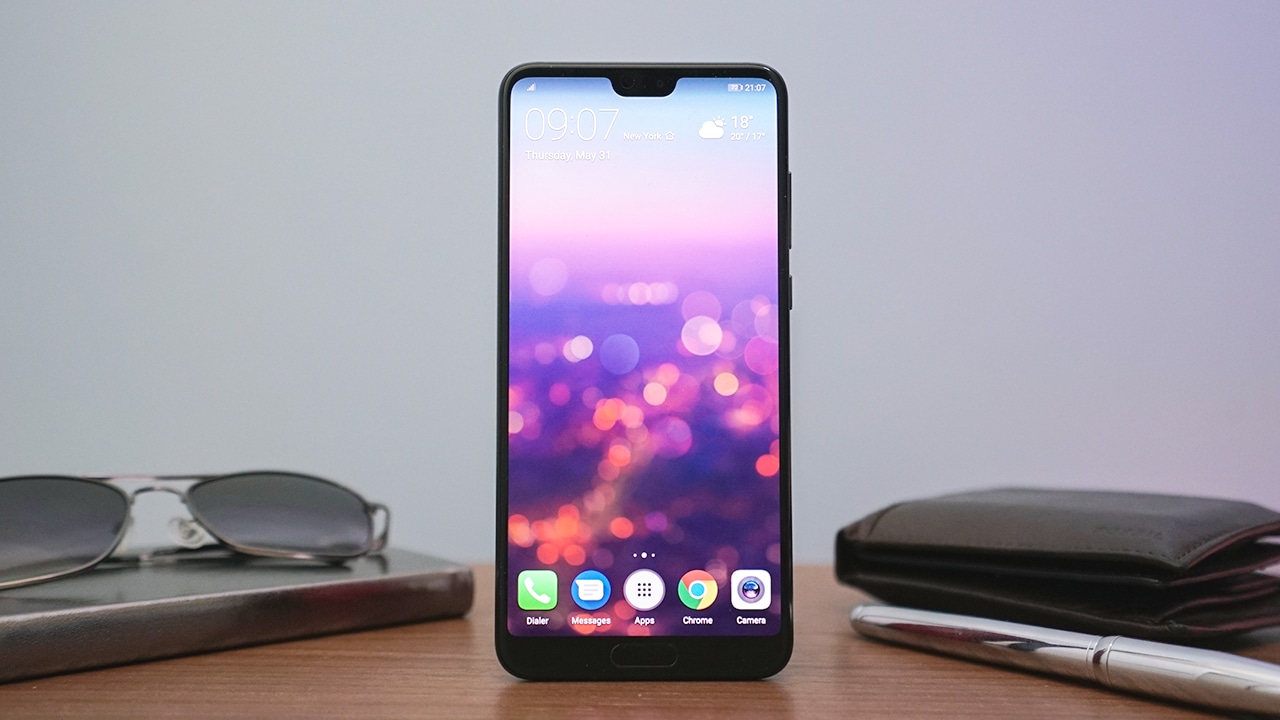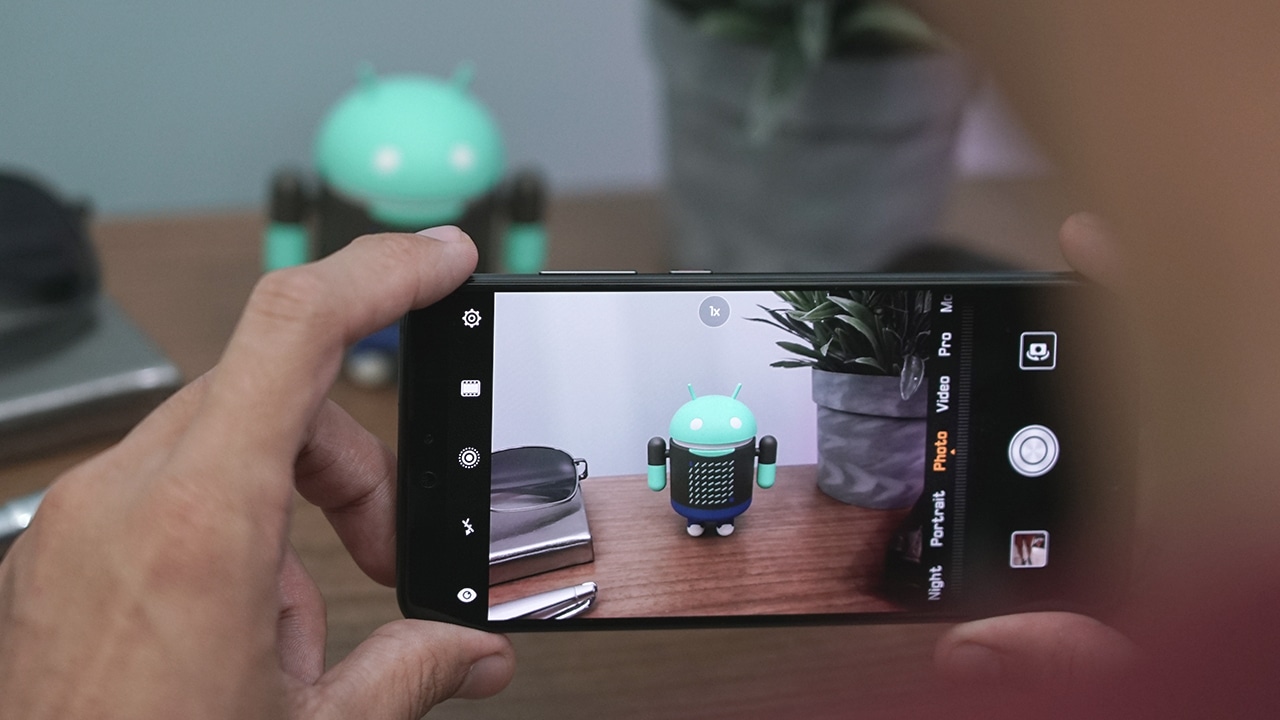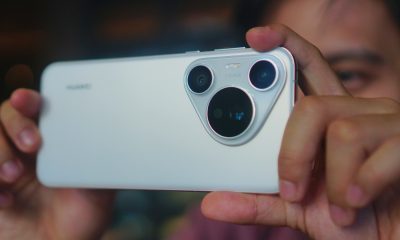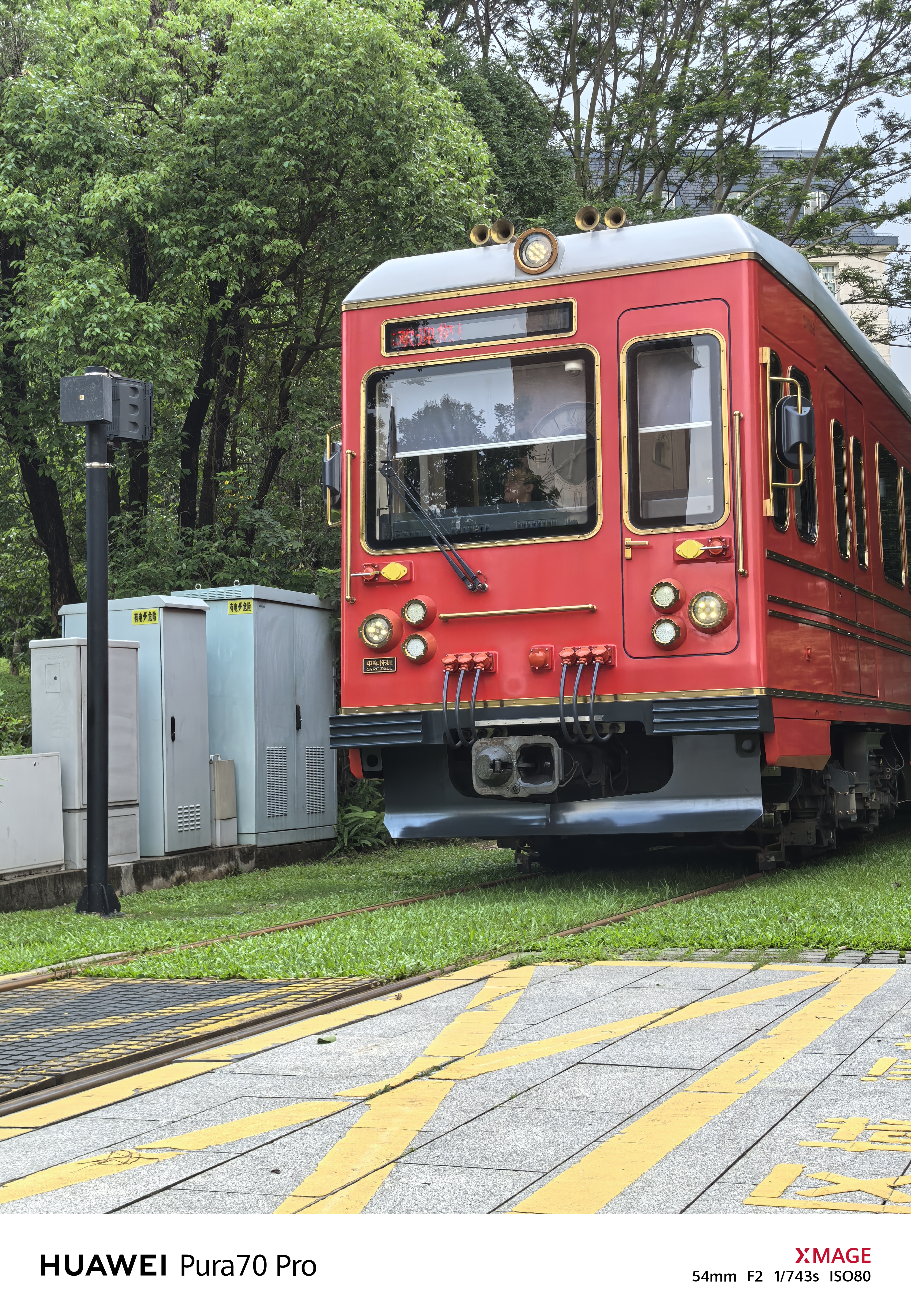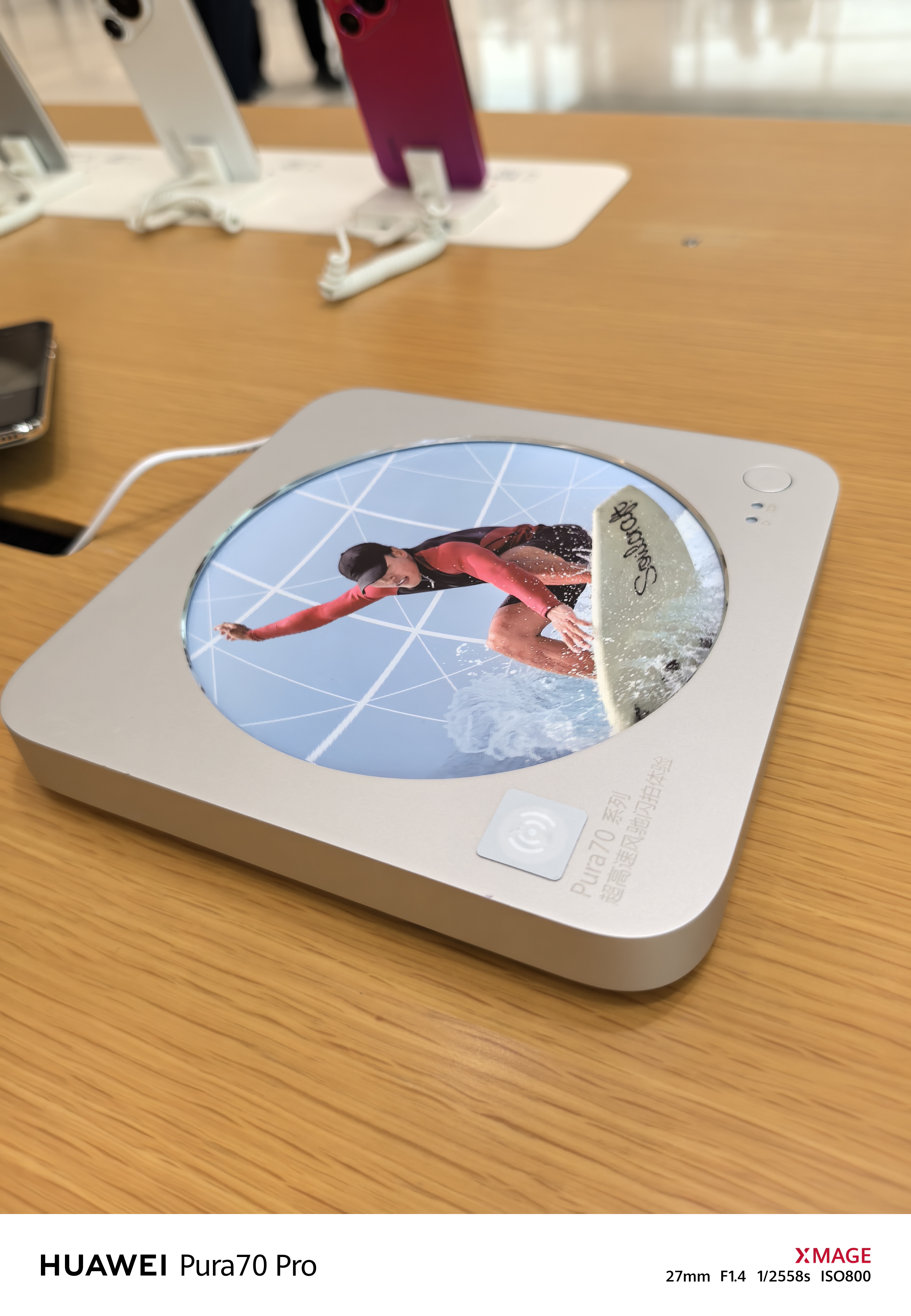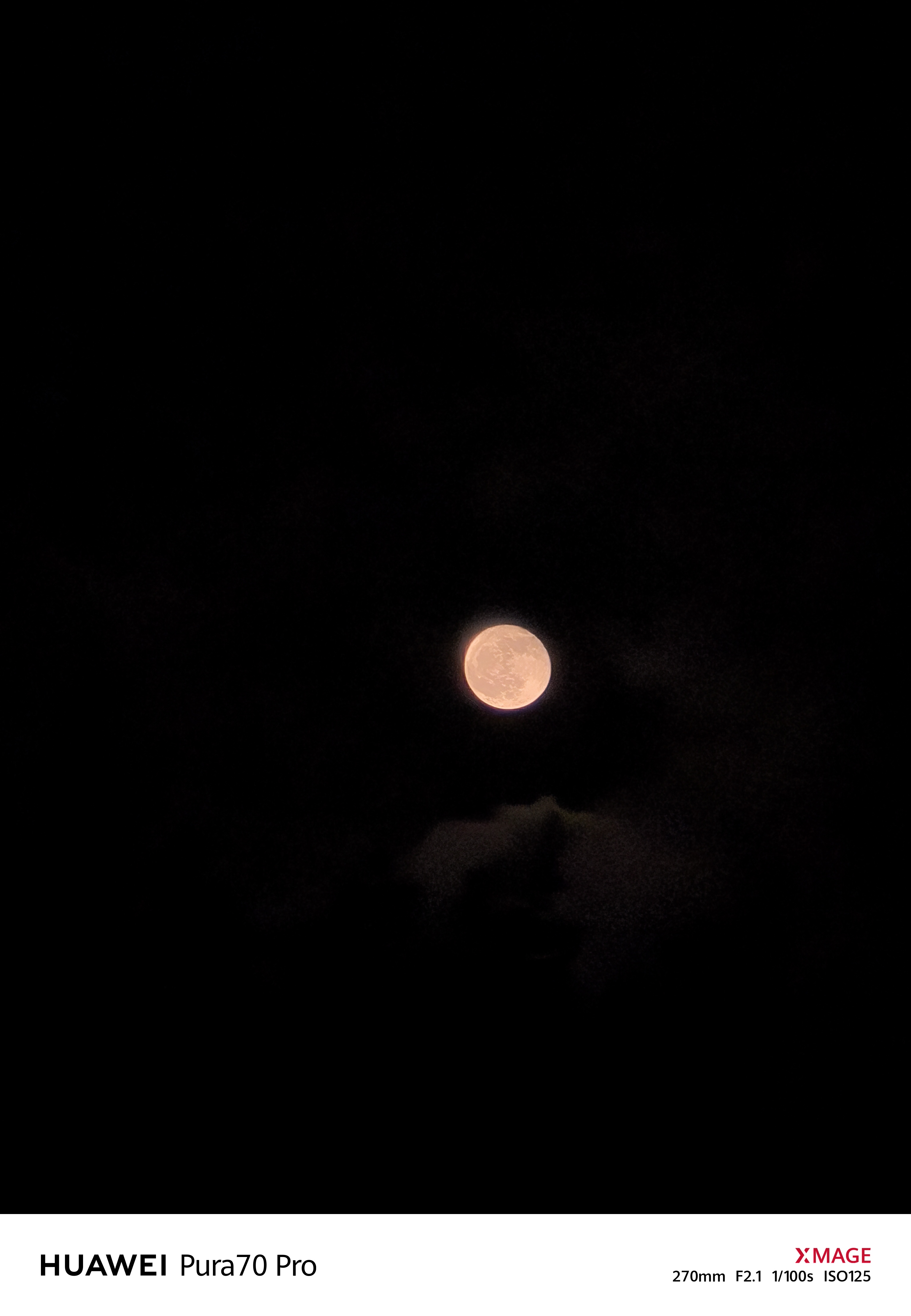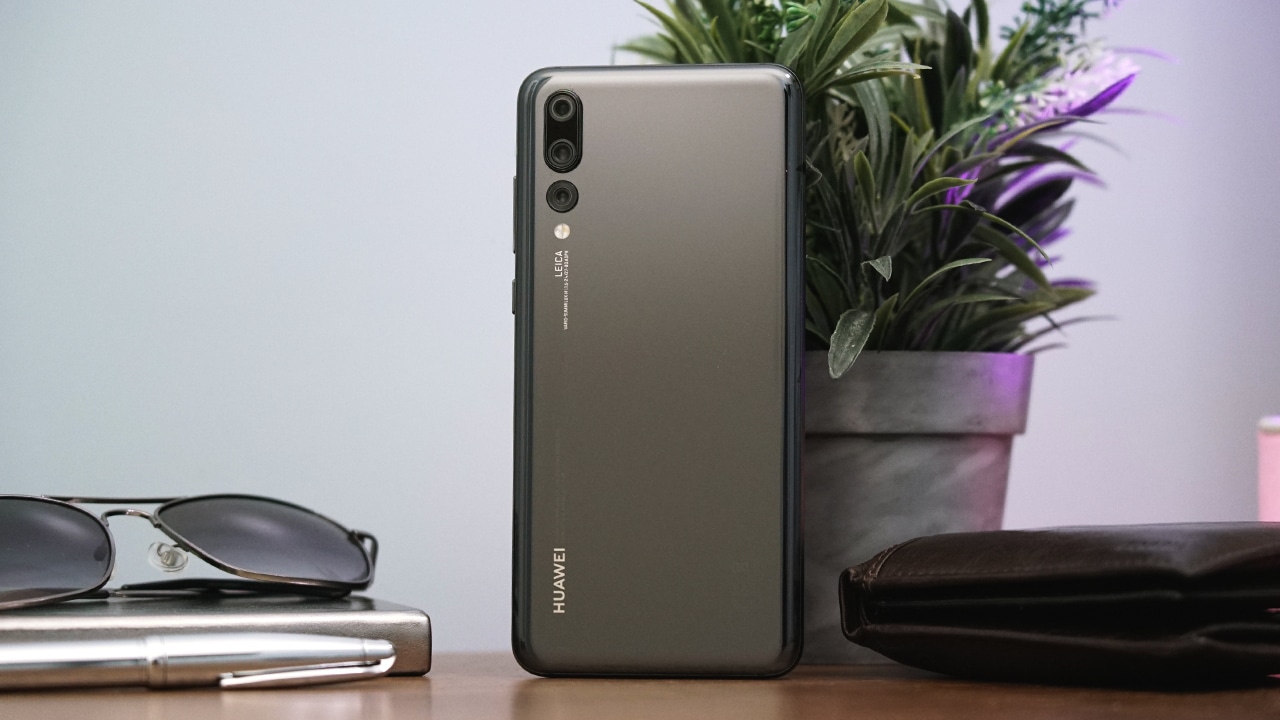
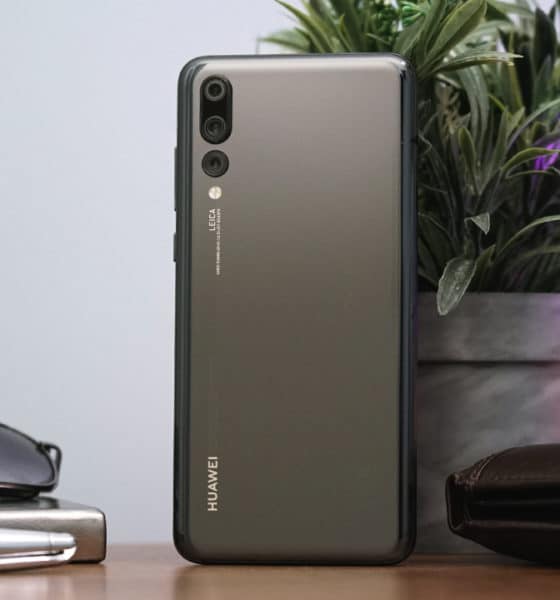
I’ll be honest: New smartphone releases don’t excite me the way they used to. As much as I enjoyed using the Mi Mix 2S and Galaxy S9 as my daily drivers for most of early 2018, they’re practically the same as their predecessors.
It takes something special to win me over. The massive gold-trimmed Mi Mix did that for me in 2016, and so did the notch-pioneering Essential Phone last year (once its price dropped, of course). But let’s be real: Neither of these phones had decent cameras. As pretty as they were to look at, in no way could they replace my mirrorless camera on trips.
Now, I don’t want to sound like a Huawei bandwagoner, but the P20 Pro has been doing it all for me, and I’m not just talking about the fantastic cameras. Having spent significant time with both the Pro and non-Pro versions, they’ve been my go-to phones midway this year.
P20 Pro versus P20 (not) Pro
Before having the privilege of using the P20 Pro as my current daily driver, I had the regular P20 in my pocket. While this may have been for OOTD purposes, it became the basis for my experience with the Pro, and a reference to Huawei’s current-generation capabilities.
Isa already wrote her comprehensive thoughts on the P20, which largely reflect how I feel about the non-Pro model. It’s sized just right for hands both big and small; the cameras are above the competition (in most cases); and its color options are simply gorgeous in person.
The P20 Pro is all that and a little more. Since it’s larger, there’s more screen real estate from its 6.1-inch 1080p OLED display and it houses a more generous 4000mAh battery — both of which are much-appreciated upgrades for power users.
Other differences aren’t as significant, like the stereo speakers and stronger waterproofing on the Pro model, but are again features that add value to the more expensive variant. Are these enough to justify the added premium? Not really, yet we haven’t touched on the main reason for buying a P20 Pro: the Leica-infused triple-camera setup on the back.
The mooore, the merrier
There are a total of four cameras on the P20 Pro, three of which are on the rear. They are: a 20-megapixel monochrome camera, an 8-megapixel sensor for additional zoom, and a primary shooter with 40 megapixels at its disposal. What does this all mean? The best imaging capabilities on a smartphone by a long shot.
People (us included) have become skeptical of DxOMark’s ratings and how they affect potential users’ perception of the best camera-phones, but there’s some truth in the soul-crushing dominance the P20 Pro experiences at the very top of their mobile chart.
Although it’s a given that every smartphone generation delivers a decent upgrade in image quality each year, none have dotted their exclamation point as much as Huawei has. It’s already been three whole months since the P20 Pro was unveiled, and no newer handset till now has even come close to dethroning its cameras’ performance.
I’ve already taken the P20 Pro across the world and used it to document my trips. I rarely say this, but this phone can definitely replace my consumer-grade mirrorless camera. Like the cameras, there are three things they specialize in, namely incredible image quality, unmatched zooming abilities, and nighttime photography like no other.
You can find a bunch of samples in my New York travel piece, along with a few more from my recent trip to Taipei right here:
Whether I’m taking shots at night or under broad daylight, with or without color, the P20 Pro absolutely delivers. I can’t count how many times I’ve been amazed by the results and thankful that I left my dedicated camera at home.
Even the zoom comes in handy when I’m traveling or shooting at an event. With a dedicated lens for this purpose, the P20 Pro can optically zoom up to three times. What’s even more impressive, however, is the image quality at 10X zoom.
1x, 3x, 5x, and 10x zoom on the #Huawei #P20Pro #SeeMooore @HuaweiMobile pic.twitter.com/hGgJOILnOa
— Marvin Velasco (@labacnotan) June 8, 2018
Using a mix of optical and digital zoom (and some advanced software tricks), photos shot at the maximum length turn out usable, which is something I can’t say for the majority of cameras out there.
While the 24-megapixel front camera seems like another recipe for success, it doesn’t hit the same high notes. Not that it’s bad by any means — and trust me, I’ve had worse — but selfies simply don’t match up to anything the main cameras produce.
This can be considered the weakest aspect of the P20 Pro’s shooters. It takes steady hands to produce sharp images, and the sensor seems to struggle a bit with groups (something Isa pointed out, as well).
It seems to me like Huawei marketed the rear cameras so strongly in order to make people ignore the weakness of the selfie cam. It’s a shame, but this leaves some room for improvements in the next flagship. Last year’s Mate 10 Pro proved that Huawei knows how to polish its selfies.
Downsides? There are a couple.
For one, I find the Master AI feature, which chooses the best mode for you using artificial intelligence, cumbersome to use. Although it gets the settings right most of the time, it adds a few seconds to the process, and there will be instances wherein it’ll experiment on its own, leaving you forced to watch it switch from one mode to another.
I simply leave this feature turned off and do the scene selection on my own. Need a good nighttime pic? I simply go to night mode and take a four-second handheld exposure. Want to blur the background behind my subject? I’m already in portrait mode. Artsy-fartsy time? There’s monochrome mode for that.
On the other hand, video mode isn’t that great. Even though Huawei managed to improve the stability and clarity of videos, they missed a golden opportunity to massacre the competition outside of just photography.
If you try the super-slow-mo mode, you’ll see how unrefined it is compared to what the likes of Sony and Samsung have done. Yes, it shoots HD videos at 960 frames per second too, but it’s nowhere near as fun or as intuitive to use.
It does almost everything else
Of course, this is first and foremost a smartphone, and we can’t sell it solely on its shooters. But even if the cameras weren’t this good, the P20 Pro stands as one of the most impressive handsets of 2018 thus far.
Give me a moment to be a little technical:
Its Kirin 970 processor, though a bit behind in terms of raw power compared to this generation’s chips, is still a beast for everyday tasks and playing the latest mobile games; the generous battery is more than enough to power through a day of heavy usage with mobile data or Wi-Fi constantly on; and the OLED display, while not the brightest or sharpest out there, has been serving me well.
So, what’s there to consider three months later? Does it truly get better with age?
To get a pure feel of the P20 Pro, I decided to not use a case or any form of protection for it. Fortunately for me, its glass and metal body held up well. It doesn’t pick up scratches easily and the frame of my black variant has a matte finish, providing more grip than I’m used to on slippery glass phones.
And even if the rear cameras protrude a great deal, they don’t show signs of wear and tear after all this time. Their placement is annoying, however; the phone wobbles with every press on the screen while laid flat on a table.
Another constant gripe is Huawei’s uncertainty about going truly wireless or not. As you may already know, there’s no audio port for your headphones, forcing you to use an adapter or wireless earphones. Nothing we can do about that since that’s the direction all brands are heading toward, but having no wireless charging despite there being a compatible glass back seems counter-intuitive.
On the bright side, charging to full takes less than two hours, but that’s if you use the bundled SuperCharge adapter. It’s a proprietary standard, meaning you won’t be able to get SuperCharge speeds with chargers from non-Huawei phones.
The phone will simply indicate “fast charging” when using other adapters and slow down the top-up considerably. As someone who brings multiple devices with me at a time, it bums me to carry a dedicated charger just for the P20 Pro.
Software-wise, EMUI has grown on me. Despite feeling like it’s based on an older version of Android and not the Oreo it’s actually running on, I appreciate the fluidity of the animations and convenience of the quick settings. After uninstalling all the bloatware upon setting the phone up, everything has been fine and dandy since.
I can’t say for certain if it truly got faster the more I used it — Huawei’s machine learning tech is supposed to kick in for this — but the phone does feel as fast as when I first took it out of the box.
And no, the camera notch doesn’t bother me. I’d take it over the mechanical sliding cameras popping up lately.
Is this your GadgetMatch?
Fun fact: I wrote this entire review on a P20 Pro. That’s not saying it can replace a laptop; I simply can’t let go of this phone.
There’s little to dislike about the P20 Pro. The only strong argument I have against it is to save your money by considering the regular P20 instead. It’s significantly cheaper in most markets, and lots of users will appreciate the handier form factor.
But if you do end up with a P20 Pro: Congrats! Smartphone cameras don’t get any better than this, and they happen to be on a mostly complete handset.


A few years ago, I was a staunch advocate of the Huawei P20 Pro. The camera-focused flagship convinced me to shelve my Nikon DSLR for something more compact. Now, years later, Huawei is back with a new revolution for smartphone photography. If you’re a fan of impressive cameras on a smartphone, it’s time to take a look at the Huawei Pura 70 Pro.
A new forward design
First of all, it’s pronounced /pyu-ra/. To celebrate 12 years of the lineup, Huawei is ditching the “P” scheme and rebranding it to the Pura series. It’s more than just a name change, too.
The first thing you might notice is the unique rear camera design. Rather than a circular island in the middle or a traditional top-left setup, the Pura 70 Pro houses a triangular island with a hidden-Mickey-like layout for the three cameras.
It’s definitely a unique design. I’ve had a few friends come up to me and ask what phone I was reviewing. And, on a more personal note, I love how the island is positioned perfectly to rest on my index finger while I’m holding it. If you’re as concerned about a ghastly pinky dent as I am, the Pura 70 Pro’s design is unintentionally a savior.
Besides the island, the flagship revels in its simplicity: a curved screen flowing down to glossy metal sides before culminating in a simple (but elegant) matte back. It’s a design that stands out but stays easy on the eyes. It’s just a shame that the purple variant isn’t available everywhere.
As always, a camera powerhouse
Since it’s right there, the phone’s cameras are a great place to start looking at what it can do. The Pura 70 Pro comes with a 50-megapixel main shooter, a 12.5-megapixel ultrawide lens, and a 48-megapixel telephoto lens. The latter can zoom by up to 3.5x optically and 100x digitally.
On their own, the cameras are already impressive. They can hold their own in adequate lighting conditions. The software emphasizes the correct color profiles depending on the situation. Plus, the zooming can just blow you away. Among the long telephoto lens I’ve reviewed, the Pura 70 Pro is up there. I can zoom in on faraway buildings, and the software just magically makes them crystal clear.
Speaking of the software, the real magic stems from the system’s AI. You can see this in real time, too. When you view a newly shot photo, the AI takes two seconds before applying corrections. You can actually see a before-and-after comparison. It’s, quite simply, magic. Colors start becoming more vibrant, and blurry subjects suddenly come into focus.
Of course, there are some situations where the AI adjustments are egregious. For example (and this is expected), photos of the moon look impossibly clear. Sometimes, the background blurs are just too much. This is coming from a meticulous eye, though. If you don’t really mind the nitty-gritty, it’s an amazing camera. Good thing I don’t have another DSLR to shelve.
If you want to see more of the hardware and software working together, try out the phone’s other modes. Ultra Speed Snapshot mode, for example, can supposedly take subjects going as fast as 300kph. Portrait mode optimizes the aperture and makes subjects sparkle. Finally, the Super Macro mode makes tiny subjects look like giants. I’ve tried all the modes, and the Pura 70 Pro just works in all three.
Kunlun expanded
After spending some time with the rear glass, it’s time to look at the glass in front. The Pura 70 Pro features the second generation of Kunlun glass. The company promises better drop and scratch resistance, compared to last year’s iteration.
Though Huawei is reserving the scratch test for the Ultra, I found that the Pro can handle tough situations, too. For example, I kept the phone in my pocket inadvertently for a whole day with a set of keys right up its screen. Instead of looking like a cat owner’s arm, the Huawei Pura 70 Pro still had a pristine screen free of any scratches.
As a display, the screen was also pleasantly bright. It puts out images at 120Hz refresh rate and 2500 nits of brightness. Even under a noonday sun, I had no issue with glare or an inability to read the screen. Watching videos on the screen was also pleasant.
Google is there… technically
Now, let’s answer your burning question: Does the Pura 70 Pro have Google? Technically, yes.
Huawei’s AppGallery does, in fact, have Google apps inside. According to Huawei, it has millions of apps. However, the online storefront doesn’t exactly carry all of them. Rather, it has a set of third-party sources you can grab the APKs from.
For example, if you want to install Instagram, the AppGallery redirects you to a website where you can download the latest APK version of the app. If it helps, the platform also scans the website for potential security threats. It’s definitely an irregular way to grab the latest software. I did install a few apps this way, but I don’t see myself growing comfortable with the method.
This doesn’t even begin to touch the thorny issue of Google apps. Yes, you can get Google’s app through this way. However, some of them constantly have warnings that the software isn’t compatible with the software. They work, though. A few still don’t. For example, the Play Store I tried downloading is too outdated to run.
Despite the difficulty, the AppGallery does have some Google apps. But it’s not what you might expect. They’re just Quick Apps, Huawei’s version of Instant Apps. Instead of launching a dedicated app, it launches a browser version of the service. Gmail, for example, works this way.
I’m sure that, with enough patience, anyone can make the phone work with a healthy dose of Google apps. If I were to make this my daily driver, I’d definitely put in the extra effort to make sure it runs smoothly with the right apps. However, the difficulty is definitely something to consider if you’re looking to upgrade.
Flagship-worthy performance
Don’t let the difficulty worry you that much about the performance. The Pura 70 Pro still handled everything I threw at it. I barely saw framerate dips when trying out Honkai Impact and Devil May Cry: Peak of Combat. Likewise, watching videos didn’t really detract from what the phone can do.
One slight hiccup, though, is its heat when operating the camera for extended periods of time. On one photowalk under the sun, the camera got too hot that I got warnings that the camera might stop working properly.
Despite the hit on comfort, the phone never really stopped working for me. I even tried recording a video for 12 minutes straight. It still worked fine afterwards.
A.Eye.
I’m not a huge fan of packing a phone with so much AI, but the Pura 70 Pro does make a compelling case. The phone’s eye-tracking features are impressive.
For example, it has interactive wallpapers that can follow your eyes. One wallpaper features a tennis match between two characters. The ball moves between the two when your eyes look at the ball. It’s mesmerizing. You’ll easily find yourself just staring for minutes.
There are more useful features, too. AI Privacy View, for example, keeps your notifications safe from another person’s eyes if it detects that you’re not holding the phone. Air scroll can identify your hand from afar. If your phone is propped up against the wall, you can use hand gestures to scroll up and down.
Strong battery, even stronger charging
The Pura 70 Pro comes with a large 5050mAh battery. Even under heavy use, the battery can last an entire day. There were only a few scenarios when I found myself lacking, such as when I shot a video for 12 minutes. All in all, it’s a capable battery attached to this powerhouse of a phone.
Still, if you find 5050mAh lacking, the package comes with a 100W SuperCharge adapter. Coming from completely empty, the charger delivered over 20 percent battery in just 5 minutes. On its own, it bumped up to full in less than 30 minutes.
If that’s not enough of a clincher, the phone also supports 20W reverse wireless charging. If your other devices run out of juice, Huawei can keep you going for a little while longer.
Is this your GadgetMatch?
Years ago, Huawei made a huge impression on the smartphone world with the P20 Pro. Since then, the company weathered restrictions from the United States. They are still bouncing back as I write this.
Though the Pura 70 Pro still has tinges of the ongoing restrictions, Huawei is returning to the same places that made it popular for smartphone photography enthusiasts in the first place. If you’re hunting for your next camera-heavy phone, the Pura 70 Pro is a worthy choice.
The Pura 70 Pro retails for PhP 59,999. Not a bad deal.

Infinix wasn’t playing around when it released the NOTE 40 series. We got not just one, two, nor three, but four models under this new lineup, as Infinix continued to offer affordable gaming smartphones to its audience. It also featured the revitalized AllCharge FastCharge 2.0.
Together with my nephew, a MiHoYo video game lifer, we chronicled a week-long experience of how the Infinix Note 40 Pro withstood — and passed with flying colors — an extensive gaming test.
But first, specs:
- MediaTek Helio G99 Ultimate chipset
- XOS 14 based on Android 14
- 12GB+12GB RAM
- 256GB internal storage
- 6.78-inch 3D curved AMOLED display
- 120Hz refresh rate, 1,300 nits peak brightness
- 108MP f/1.8 main camera, 2x 2MP cameras, 32MP selfie camera
- 5,000mAh battery
- 70W All-Round FastCharge 2.0
- 20W Wireless Magnetic Charging
Built to endure
My nephew downloaded three of MiHoYo’s popular titles: Honkai: Star Rail, Honkai: 3rd Impact, and Genshin Impact. What better time to play the last title too, looking back, as version 4.6 went live over the weekend. From the get-go, the NOTE 40 Pro delivered flamboyantly.
My nephew played Genshin Impact first, all while having the other titles download in the background. That’s how capable the gaming phone is.
The dedicated gaming mode allows you to tinker with several settings, like block notifications to focus on your gaming. You can also switch between balanced or performance mode, which will allow the phone to have the CPU and GPU work hand-in-hand and distribute the workload in a balanced manner.
Technically the variant above the base model, the NOTE 40 Pro handled Genshin Impact‘s medium graphic settings well, and didn’t flinch even when it got to busy clashes. It showcased the characters’ attack effects smoothly, move after move.
The following day, my nephew decided to open Honkai: 3rd Impact. While he was able to play without too much disturbances, he noted how the phone had a difficult time when the title is put to high graphics. But that was understandable.
This game is just that demanding. The same problems can be experienced even when using PCs. There were just a few instances where the phone experienced frame drop while in-game, but good thing there’s XBOOST Frame Rate Control to mitigate it.
Finally, he switched from one game to another in the following days. And he also luckily got Arlecchino in Genshin Impact once the update went live.
With the open-world RPG, the gaming experience was still generally smooth even after an hour of gameplay, making the NOTE 40 Pro ideal for long grinds. My nephew noted how encouraging the experience is as a sign for the Helio G99 Ultimate processor under the phone’s hood. It definitely enabled the NOTE 40 Pro to exceed expectations.
Aside from its reliability and toughness for gaming, here are other things we loved about the Infinix NOTE 40 Pro:
70W All-Round FastCharge 2.0
Aiding the NOTE 40 Pro is Infinix’s much improved charging technologies. Users may choose between three charging modes when the device is already plugged in: Low-Temp, Smart, and Hyper. Hyper mode charges the phone in the lowest time possible.
We didn’t have to charge it every day. In our experience, it look under an hour to charge from 15% to full, and about 30 minutes from 50% to 100% on average.
It gets hot when under Hyper mode, but not too concerning. Fortunately, the phone disconnects automatically when it reaches 100%. That’s even if it’s still plugged in. I noticed this firsthand, where the phone stopped absorbing power and wasn’t hot anymore.
Only the adapter was still absorbing power. That’s a nice feature to have just in case you forget to unplug it right away or should you get distracted. By default, and just to save on your electric bill, make sure you remove the charger from the outlet once you’re done using it.
Nevertheless, if you want to buy more time or want to feel “safer,” the other two modes are there. I hardly used the 20W magnetic charging plate. But just to test it once, the phone took more than 90 minutes to charge to half full. When in-game, bypass charging gives the phone extra juice but it won’t charge the battery itself, so you’re safe from overheating.
Upper midrange feel
Elsewhere, the phone has a neat OS that looks and feels fine. I like how Infinix didn’t load it with bloatware, giving it an upper midrange feel in spite of the very affordable price point. The handset’s appearance is likewise a level up. At the back, there is a ring light (called Active Halo) instead of a traditional flash.
This also illuminates for additional style points. My only gripe is that the phone’s backside is slippery. But the magnetic charging case actually doubles nicely to give it a leathery finish. When the phone is slotted into the case, it feels perfect to hold. Not too thick nor thin, and just comfortable.
In front, the NOTE 40 Pro also has a 3D Curved 120Hz AMOLED display to complement the gaming experience. Even when you’re not busy with various titles, any content you consume will have a clearer, more vivid look. As the phone’s sound is also supported by JBL, it comes out with better bass and more impactful sound that’s likewise best for gaming or streaming.
Camera package: Surprisingly good
This Infinix offering also boasts of a 108MP main camera. I was actually surprised at how pictures of food and landscapes came out with good color and quality.
Yes, it’s not as high-end as what you’ll get from flagships, but the results are still a level up from typical budget smartphones. Color temperature is on the warmer side, while colors lean toward more saturation.
Reds and oranges appear intense, which can be good for food and landscapes. At the very least, you’re assured of captures that aren’t dull.
I took most shots using the AI main camera, which does well in detecting the scenes. Unless I intended to use another mode, the default shooter sufficed. I am even more impressed by the portrait mode.
Transition between blurred and non-blurred parts is smooth, and the bokeh effect looked natural. It elevated some subjects more. Of course, you’ll get some results where it didn’t appropriately blur some parts.
Night mode is decent, too. You get brighter captures on scenes under low-light compared to what you saw with the naked eye. The results aren’t noisy, either.
Selfies are just alright, with some balance between detail and smoothness. Naturally, since this is a budget phone, it kind of gave up after an hour of shooting. There were instances where it didn’t capture images even if I repeatedly pressed the shutter.
But with what I’m getting for its camera package, it’s a great bonus.
Final thoughts: Guaranteed tough for gaming
Even if you’re not a gamer, you’ll absolutely appreciate what the Infinix NOTE 40 Pro can bring to the table. For PhP 9,999, you get an all-around phone that delivers reliable performance and allows you to elevate the overall usage experience. You get a capable camera, ample memory and storage, and generally smooth performance.
If you’re a gamer, this is an absolute steal. From its design that puts it right up there with flagship level devices, along with its tough performance even when we played the most RAM-demanding titles and set other games to higher graphic settings, Infinix made sure this device wasn’t just all for show.
With the Infinix NOTE 40 Pro, you’ll wield a budget phone that is not budget-level at all. Guaranteed.
The Infinix NOTE 40 Pro retails for an introductory price of PhP 9,999, exclusively on Shopee.
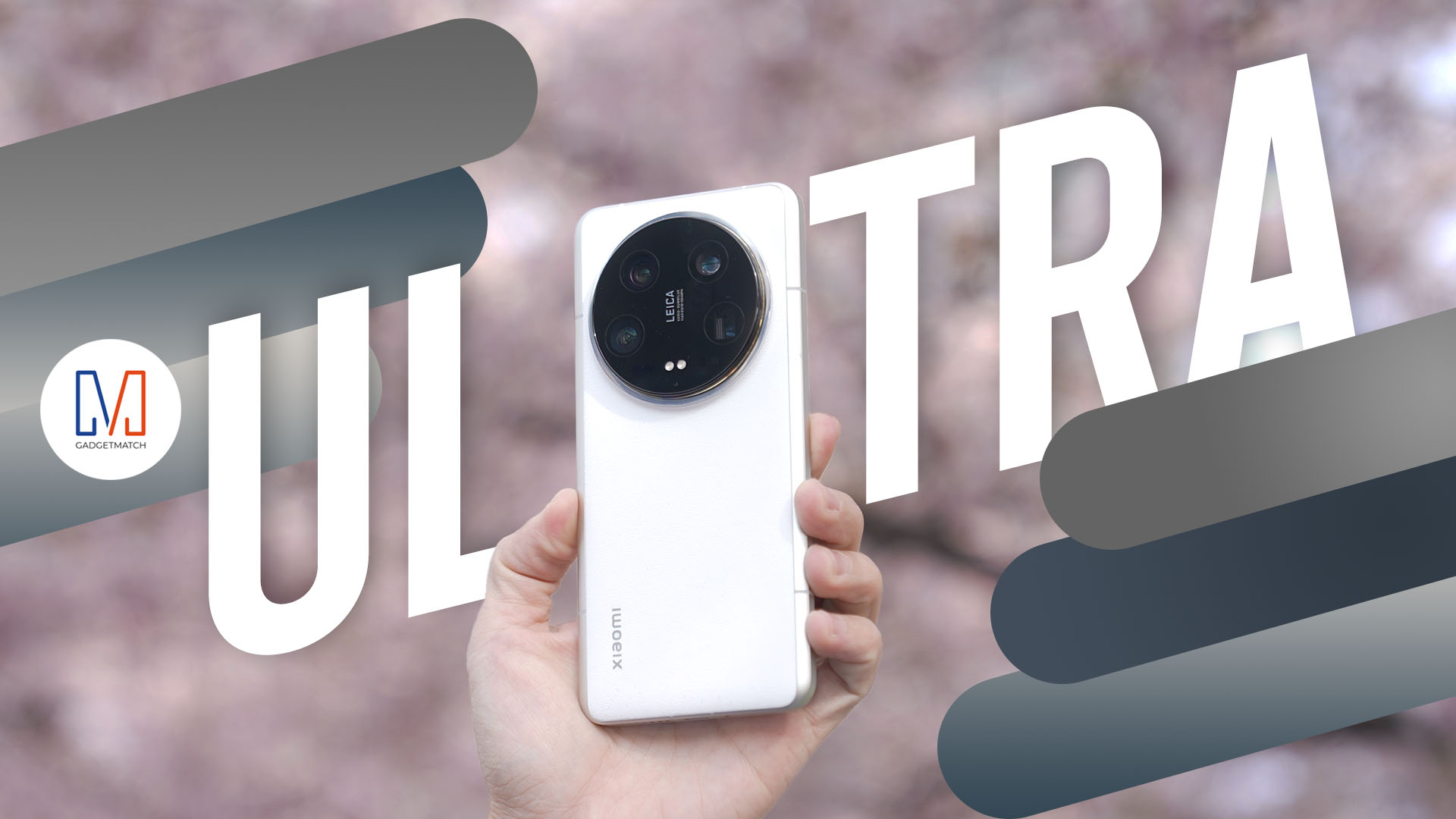
It is almost guaranteed that the best flagship smartphones you can buy today have nothing less than their excellent cameras.
But Xiaomi not only wants to take smartphone photography up a notch, their approach is unlike anything we’ve seen before.
This is our Xiaomi 14 Ultra Review!
-

 News5 days ago
News5 days agoA kid learned Tagalog just by watching La Luna Sangre on her iPad
-
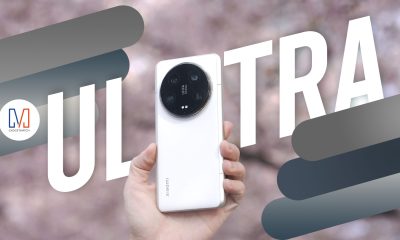
 Reviews2 weeks ago
Reviews2 weeks agoXiaomi 14 Ultra Review: The Ultimate Camera Smartphone
-
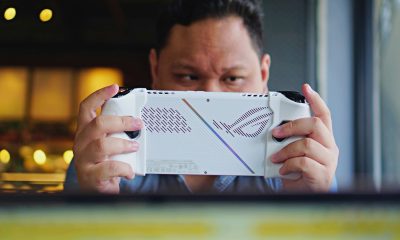
 Gaming1 week ago
Gaming1 week agoROG Ally X announced
-

 Reviews6 days ago
Reviews6 days agoInfinix NOTE 40 Pro review: Built to endure
-
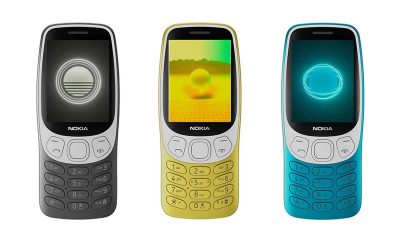
 Smartphones2 weeks ago
Smartphones2 weeks agoHMD Global revives the classic Nokia 3210
-
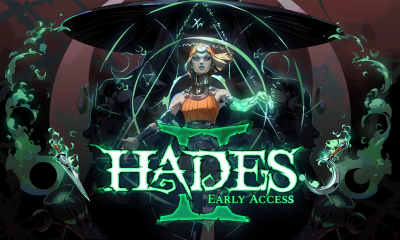
 Gaming2 weeks ago
Gaming2 weeks agoHades II is out now on Steam Early Access
-

 Gaming2 weeks ago
Gaming2 weeks agoHelldivers 2 review-bombed after Sony debacle
-

 Gaming2 weeks ago
Gaming2 weeks agoApple Arcade adds 5 more games


